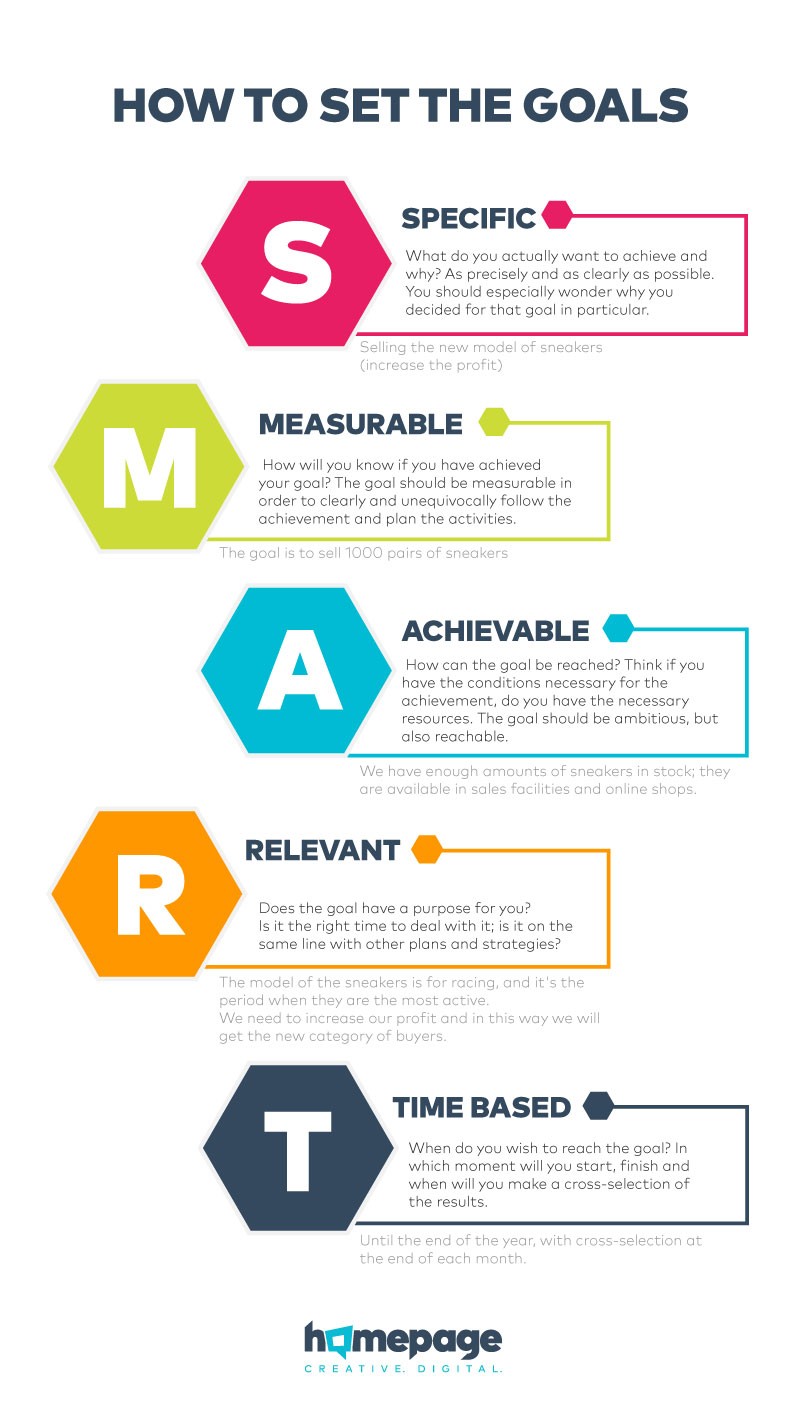The goals and the targeted groups
How to set the goals and define the targeted groups?
“When you reach the goal, you miss everything else.”
This is exactly what we want when it comes to digital marketing strategy.
Clearly defined goals and precisely defined target groups can save a lot of time and money and they are the basis of a good strategy. Every click costs and you do not wish to pay for clicks which do not have a chance to be converted.
This is all clear, however when it comes to the moment of defining the goals, that is when it usually became a chaos. We want the people from the internet to come to our store. But also we want them to buy on the online shop. We would like the people on Facebook to see that we care about our employees. And that we are socially responsible.
And then you start digging into your business and you realize that everything is important and that nothing can be ignored.
And you are absolutely right. Everything is important. Only in certain moments something is more important.
START SMART
The goals of digital marketing come from business goals i.e. the goals of communication. In case the business goals are not defined you have to go one step back and do that first. The most common trap in which many fall is that they are observing the digital marketing as a separate unit. Actually it is just a part of a bigger plan which includes all the other activities.
When you have clearly set the goals of your business, then you should think about the way digital channels can contribute to their achievement.
You have probably heard already that when you set the goal, it is good if it is SMART. What this actually means? Here is a small guide that will help you to set your goals in a few steps:

When in this way you define the goal you will have a very clear image what and when do you want to achieve and how will you measure whether you are on the right track.
WHO IS YOUR TARGET GROUP?
To start with – not everyone is your target group. Yes, sometimes the buyer will be a senior citizen, sometimes a student. And yes, there are items that everyone is buying. For example bread, almost everyone is buying it. However, someone is buying wholegrain, someone the white bread, someone buckwheat bread, someone gluten free…
One of the biggest mistakes is to try and be liked by everyone and to think that everyone is your target group. You probably already have some vision about who are the people that bring you the biggest part of the profit. The buyers are always different, but in every business there is one group that stands out and has similar performance and brings the biggest profit. This is your primary target group.
To make it easier, you should start like this:
- Who is paying?
- Who affects the person which is paying?
Now it is clearer. The primary target group is the person paying for your product or service, while the secondary target group is influencing the decision of the person which is paying. It can be a close person, member of the family, anyone from the surrounding, but in some way the celebrities which affect the bigger groups of people (in marketing we call them influencers). To begin with this will be just enough. In some later phases, you can think about the media as a target group, the decision makers in organizations that are important for your business and etc.
Now try and describe your ideal customer. How old is it, where it lives, which gender is it, what is his occupation, what are his interests…Try to write as detailed description as you can, even give him a name and some personal characteristics.
The next step is to identify what this person needs, what motivates it, what are their goals, challenges, and who can influence that person, what is their daily routine, what is important to it.
On the other hand, see what is it that you can offer to that person. What are the values, advantages, benefits which will help your ideal buyer to reach some goal, solve a problem, make his life easier or make some wish come true
Make the same goal for the secondary and other target groups that you defined.
When all of this is done, you should analyze which are the places and what are the moments, opportunities when the interests of the groups can match with what you can offer them. Here we come to the choice of choosing the channels of communication, about which we will write in our next text.
All further steps of the strategy will be much easier and clearer, and the strategy itself will be more successful, after the proper setting of goals and defining target groups.



